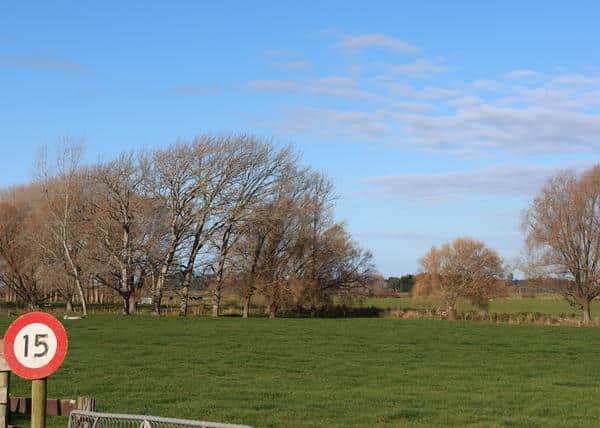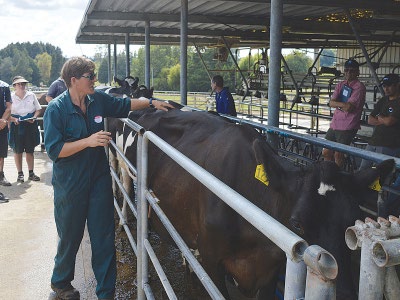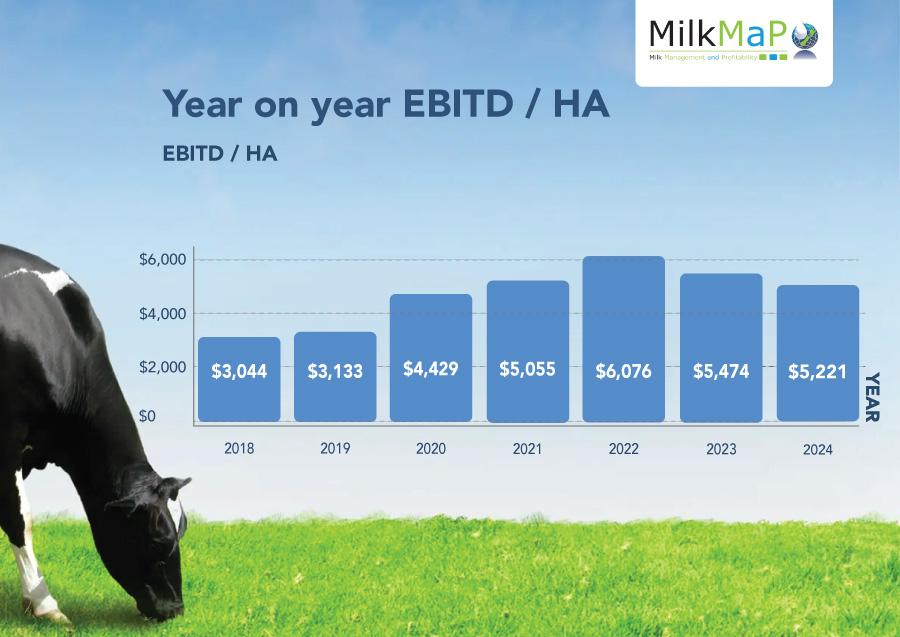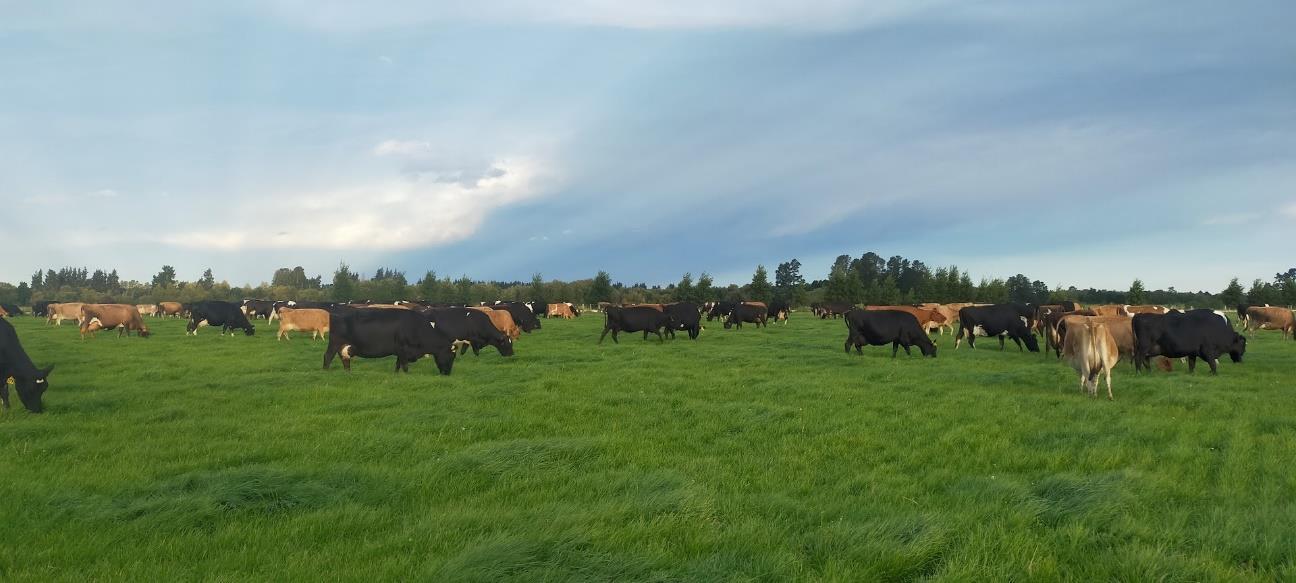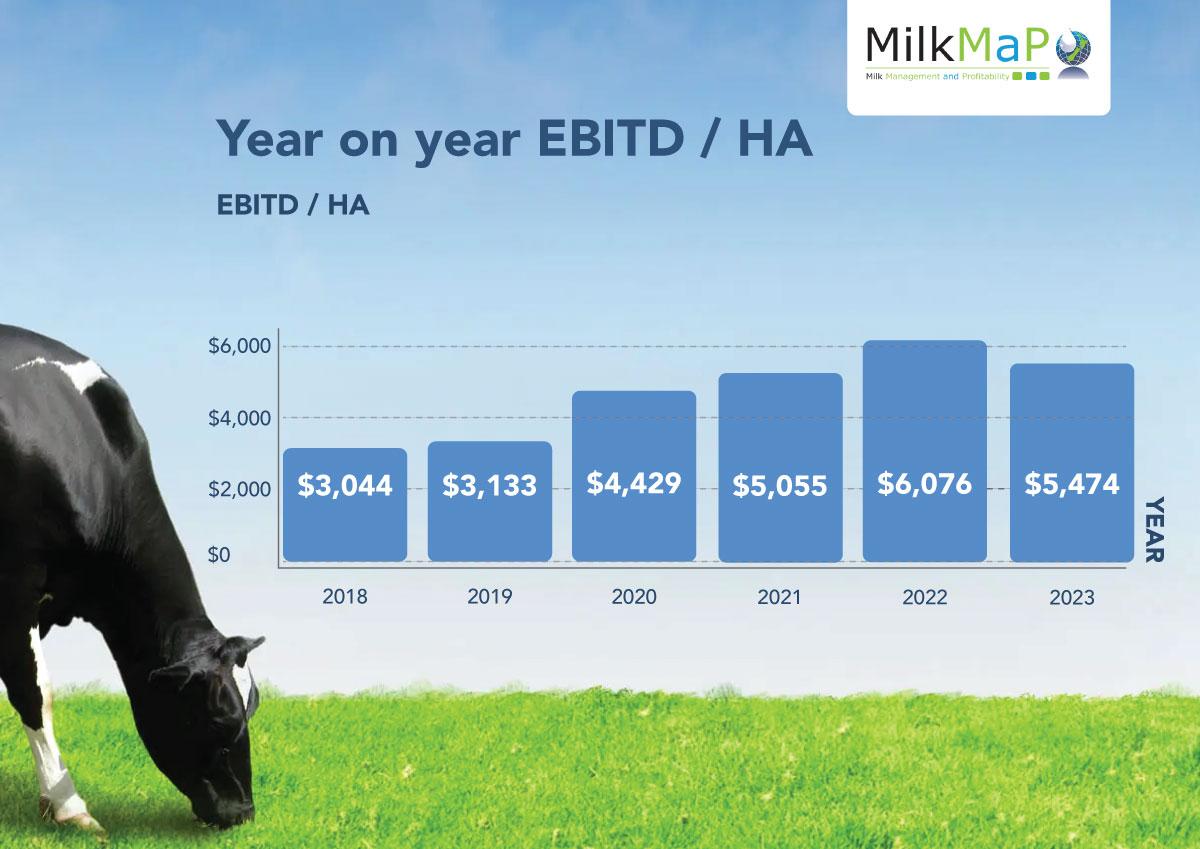MASSIVE PHILOSOPHY SHIFT FOR PRODUCTION PUSH
A massive philosophy shift will put New Zealand’s production systems under the microscope on a South Canterbury dairy farm this season.
Rua Farming is owned by equity partners Chris and Jane Draper (Culverden) and
Gert and Hermien van’t Klooster (Glenavy).
Historically a low-input grass-fed System 2 operation, this season it will approach System 4. The new regime will take a transparent approach to changing the expectations of this 1000-cow crossbred herd on 265 effective hectares at Glenavy (with a 290ha run-off).
A new equity-partner collaboration with significant runs on the board is the main impetus for the change. Sitting in the driver’s seat of this farm’s daily operations (with six staff) is Mitchell Bragg – who used to be an equity partner himself. Mitchell sold his shares six years ago, shifting them into real estate, but stayed on as the contract milker. It puts him in an intriguing position, having seen the farm before, during, and after this transformation.
Last season the operation finished with an average of 390kg milk solids (MS) per cow (372,000kg MS on 950 cows). The result was down on previous years because of silage quality and aging pastures across the farm.
This year they are looking to turn that into a minimum 420kg MS per cow. A meal system has been fitted to the 50-stand rotary dairy, and they will be feeding wheat and palm kernel through the dairy. The thinking revolves around using that supplementation to fill pasture deficits during the year by meeting the cows’ energy demands without having to open the silage stack for short periods.
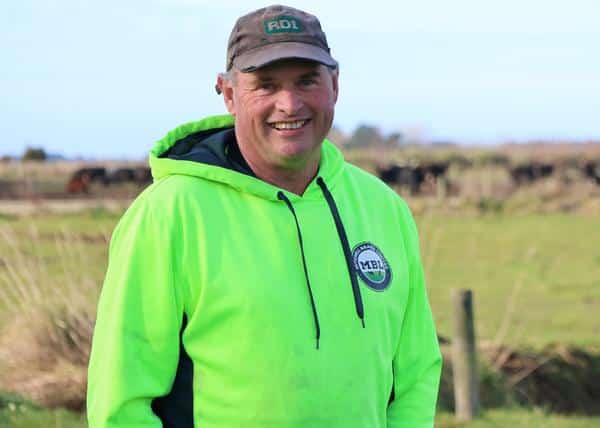
SWITCHING IT UP
Another significant change 18 months ago was adding MilkMaP consultant Andrew Trounce to the team.
MilkMaP focuses on “milk”, “management” and “profitability” by analysing the business’s cost structure, and then the impact of any proposed rate changes to feeding or stocking.
Mitchell said, “We were very stagnant, and personally I wasn’t happy with how the farm was going. We wanted more production, and we wanted more profit.”
Mitchell said bringing Andrew – who now chairs Rua Farming’s board – deeper into the business made sense to them all.
“When our previous equity partner left, we were then looking for a new chairman, because the two shareholders are 50/50 each and we needed a third – outside – person as a director.
“It’s also brought in a lot of comfort for me especially around decision-making. Because the board meets three times a year and a lot of the decisions that happen outside of those times are left up to me, and sometimes you must make a call.
“It’s good to have someone else to talk to. Andrew is good to talk to, he has a great background, and he’s practical too. It’s been a very good move for us all.”

INTENTIONAL MOVE TOWARD PROFIT
Changing the farm’s management has been an intentional move, Mitchell said.
“If we’re doing something, we are definitely justifying why we are doing it financially.”
Mitchell said he believes they should be producing 450-460kg MS per cow.
“We have made some of the changes fairly gradually, but our cow weights in February last year were – on average – 451kg. This February they were 490kg, just because of the better feeding.”
In the past 18 months, they have also added cow collars, going live four days before mating in 2022.
“We trusted it right from the start and didn’t use tail paint,” Mitchell said. “We had a 72% six-week in-calf rate and 13% empties. The year before we had a 65% six week in-calf rate and 17% empties. So, that was a big improvement. Also, I didn’t have to be in the shed watching heat. After working with the system, it became obvious to me that we were picking cows 12 hours too early with the tail paint.
“It’s also good if we want to go down the sexed semen route.”
They completed up to 10.5 weeks of artificial insemination this year, before adding a Stabiliser bull (Hereford x Angus x Simmental x Gelbvieh) to the mix to mop up.
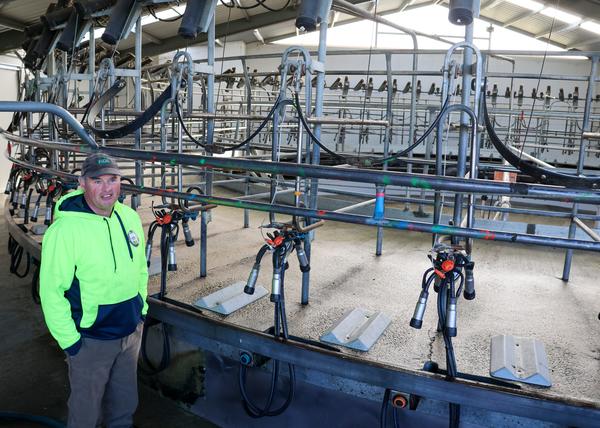
GRAZING CHANGES
Other changes include a move to 24-hour grazing and deliberately opening up a new paddock on the evening feed where paddock sizes allow, for protect the herd from potential overnight feed shortfalls.
There are no electric fences to shift because the cows get the entire paddock – with close attention being paid to the rotation lengths and residuals.
“We are now trying to leave the paddocks with a residual of 1600kgDM/ha – we used to graze down to 1500 or less. We’re also trying to go into the paddocks when they have 3000-3200kgDM/ha cover.
“We used to get into a bit of a hole sometimes with grass, and this is designed to be more structured. Under our old system, the best production we could get was 405,000kg MS using 300 units of nitrogen that year. Now, we’re using 186 units of nitrogen and pushing towards 420,000kg MS.”
“We have had more changes on this property in the last two years than we had for a long time.”
He said they’re also seeing the benefits of technology.
Mitchell, who has been milking cows for 22 years, is a regular judge for the New Zealand Dairy Industry Awards – judging Canterbury and the West Coast regional competitions this year. He said judging has been just as good for him as it is for the contestants, because of the culture and consistent energy which surrounds the competition.
“You do tend to come back from visiting those farms inspired yourself,” he said.

OPPORTUNITY TO EXPAND THINKING
Chairman Andrew Trounce said changing equity partners naturally opened new conversations.
“Because there was a change in the equity partnership, there was an opportunity to expand our thinking, and I could also see room to make changes for the better and to improve that performance,” he said. “Not only of its production efficiency but also from a financial standpoint.”
The initial focus was on adding the collars to the cows, improving animal health, cell counts, and in-calf rates.
“Mitchell has taken to that technology so well. Along with the collars, there was auto drafting added which allowed a lot more herd management to be done – like lameness or illness. It’s just about making those jobs just that bit easier.”
Andrew said that originally Mitchell was a contract manager, but this season they moved him to a contract-milking role so that he could share in the success as they improve production.
Now, they are turning their attention to feeding for heavier production.
“In the last year, we’ve started to venture more into making sure those cows are fully fed 365 days of the year; we’re getting the condition on them because we are ticking more boxes now. We’ve halved the amount of fodder beet being grown on the platform. Instead of feeding it in March, we’re not doing it until late April or early May, and we’ve replaced the fodder beet feed we used to feed in March with palm kernel.
“The in-shed feeding will be a massive change and a learning curve. But Mitch has not held back. It’s hats off to him for his willingness to be so open to this, given he’s farmed one way many years.”
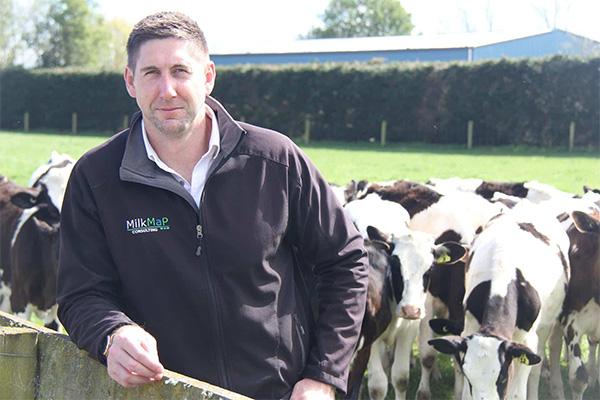
ENDGAME CLEAR
And the endgame?
Andrew said, “We want 1:1 bodyweight-to-production and to be cost-effective with the use of that feed that we possibly can be.
“We’re not looking to run a System 5, but we’re wanting to move away from that System 1 and 2 scenario and into that 3 or 4 zone – whilst being very efficient in how we do it.
“It’s a big step to aim for 500+kgMS, considering we’re around the 400kg MS right now, but we do want to be close to that 500kgMS mark at the end of this.”
Andrew said the board is a new move for him, and he has enjoyed the step up.
“When you’re consulting you are focusing on the day-to-day operational detail and feed planning scenarios. This role gives me a lot more information about capital and compliance regulations. It brings value to our consultancy as well because I have my head around the whole business.”
Andrew said this is a dairy that not only remains an exciting work in progress, it also gives an “apple for apples” comparison on how this change impacts overall profitability.
“I look forward to seeing this farm move towards the higher levels of EBIT/hectare [earnings before interest, tax, and depreciation] as we lay those results alongside our client base when everyone’s data is benchmarked.
“I think this is about telling that story around where they’ve been, and where they’re heading.
“They are part way through a journey, and heading to higher performance and production per cow, and they are seeing the benefits of that.”
Watch this space…
